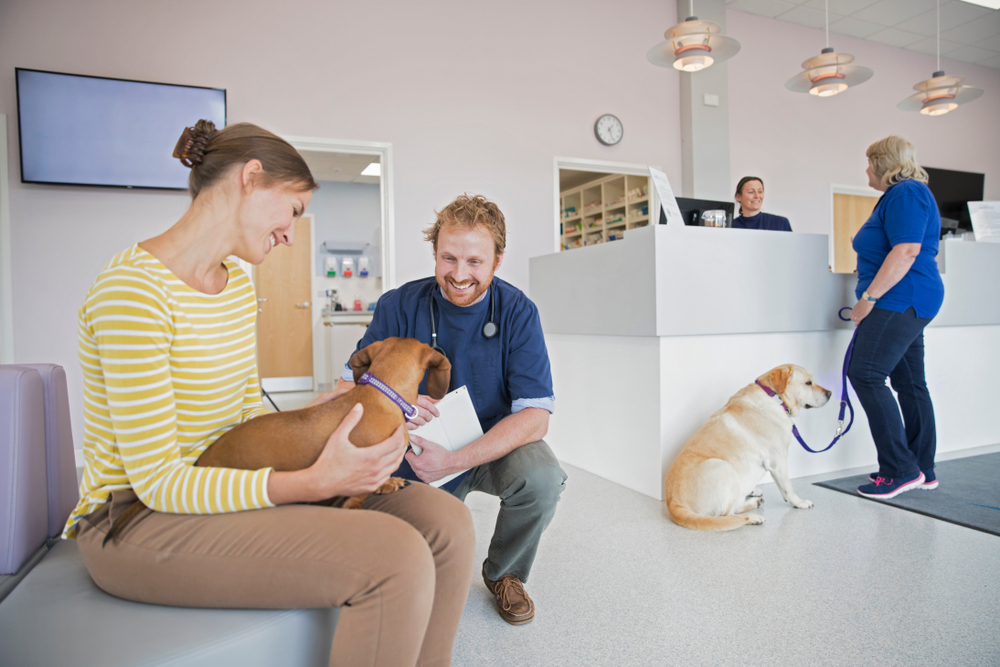Successful marketing strategies can help you get clients in the door, but what turns them into your best clients? Clients who feel a personal connection with their veterinary team more likely will trust their recommendations, default to their expertise instead of Dr. Google, and return with their pets year after year. Such a relationship starts by attracting the clients who best fit your practice philosophy, and grows when a client’s first visit meets or exceeds their expectations. The Digital Empathy team is sharing our tips for providing clients with a mind-blowing first impression and bonding them to your practice for life.
#1: Attract the right clients
You can’t please everyone, and not every client is a good fit for your practice, so managing client expectations is critical. Thoughtful marketing that attracts the right clients means those clients already understand and agree with your practice style and philosophy, and they choose to walk through your door rather than the practice down the street. And—most importantly—they likely will return if their first visit is a good one.
A well-designed practice website that breaks free from the standard, cookie-cutter style can help you stand out from the crowd with an emphasis on what makes you truly unique. When clients understand who you are, how your practice operates, and your background story, they can build an emotional connection before they set foot in the door.
#2: Set aside extra time to build rapport with new clients
Relationships are founded on trust and good communication, and you can best earn that trust by getting to know clients on a personal level—and listening. Extend new-client time slots, so the veterinary team has an extra few minutes for introductions and non-veterinary conversations that build rapport. Create a formal notation system in your PIMS to record important personal details such as:
- The client-pet relationship — Does the client see their pet as a family member? Is house soiling or another behavior or health issue straining the human-animal bond?
- Likely client concerns —Has the client expressed financial concerns? Has the loss of a previous pet sensitized them to a possible future poor prognosis?
- Priorities — What things are most important to the client? What are their goals for their pet’s ongoing care?
- Personal information — What is the client’s family dynamic? Are they married, single, or divorced? Do they have an upcoming trip planned?
Recording this important information will help steer future conversations toward the client’s needs and wants, and away from potentially tenuous topics. Additionally, when you turn the conversation to the pet, use reflective listening techniques and avoid rushing through the appointment.
#3: Allay pet and client anxiety
Clients increasingly consider pets as family members, and are deeply concerned about their pets’ physical and emotional welfare. Visiting a new veterinary team can make clients and pets nervous and anxious, which you must address with a safe, calm, comforting space. Anxious pets can be handled according to fear-free, low-stress, or cat-friendly principles, and clients feel reassured and included when you talk to them and explain each step of their pet’s visit.
#4: Provide a welcoming environment
Welcome clients warmly as they walk in the door. Clients judge a practice from that moment, first considering how they are greeted, and then the lobby area’s cleanliness and style. Choose light, neutral paint colors, and keep the lobby quiet and clear by rooming patients as soon as they arrive. Soothing, ambient music and appropriate lighting can make a space inviting.
Many emotional conversations occur in your veterinary practice, and people need to feel physically and emotionally safe in order to trust you with their deepest thoughts and concerns. Trust is built under certain circumstances, and when we better understand a client’s needs and prioritize them, they will be more likely to open up. More specifically, people need to feel understood, and that they matter and belong, to feel emotionally connected to you. Consider how you are meeting these human needs to strengthen the bond you build with each client.
#5: Focus on the client experience
A good first impression involves considering the client’s point of view, and streamlining and elevating their experience. Obtaining records ahead of time and reviewing them prior to their visit shows clients you are prepared, you understand their pet’s special needs, and you care enough to make personalized recommendations. Do not leave clients in the lobby or the exam room for more than 15 minutes without an explanation or sincere apology. Offer to help clients to and from their car, check out anxious pets in a room rather than the lobby—do whatever you can to improve their visit.
#6: Forward book follow-ups with the same veterinarian

Lasting relationships grow from continuity—if you work in a multi-doctor practice, schedule clients with the same veterinarian each time, and forward-book their next visit, if possible, before they leave the hospital. Seeing the same veterinarian each time builds trust, streamlines the check-in process, and offers better medicine, as the veterinarian is already familiar with the pet’s history and the client’s style and personality.
A client’s first visit to the veterinary practice can make or break your future relationship. Digital Empathy offers website design and marketing services that will help you attract your ideal clientele, and set the stage for a great first impression. Contact our team or visit our website to check out our award-winning, AAHA-recommended veterinary marketing products.






Leave A Comment